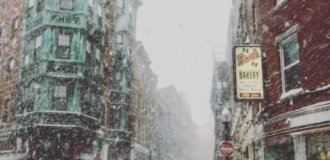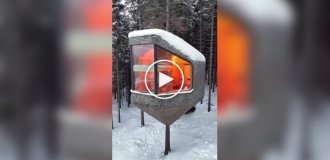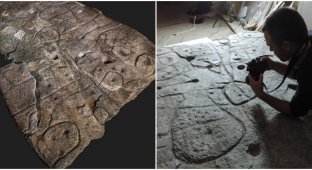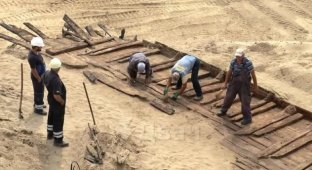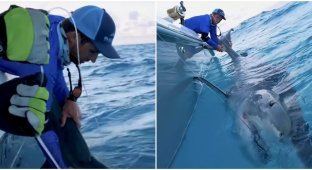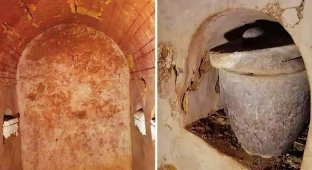The secret of the giant glass monolith in Beit Shearim (10 photos)
In one of the caves of the ancient necropolis of Beit Shearim, an ancient Jewish settlement in northern Israel, lies a huge slab that looks more like a block of limestone. 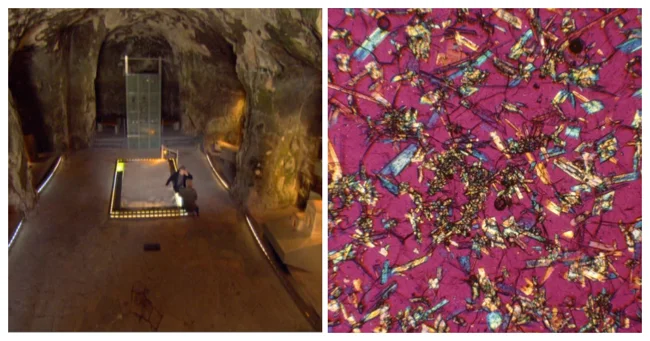
But it's not a stone. It's a nine-ton block of 1,600-year-old glass.
A Failed Masterpiece 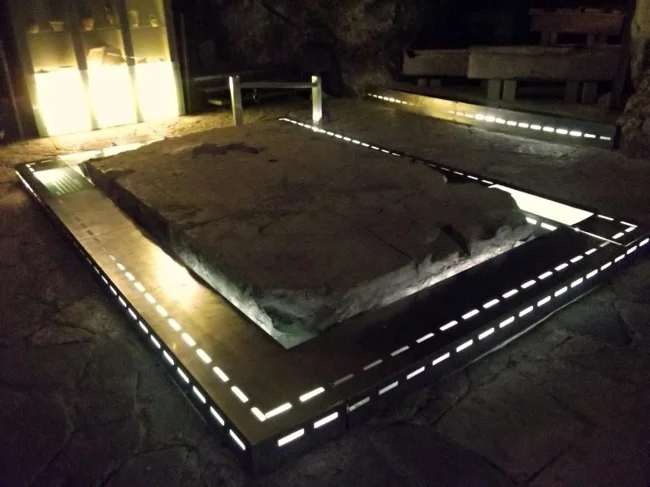
The dimensions of the slab are impressive: two meters wide, three and a half meters long, and almost half a meter thick. It is matte, gray-blue in color, and if it were not for the chemical analysis, no one would believe that it is glass. 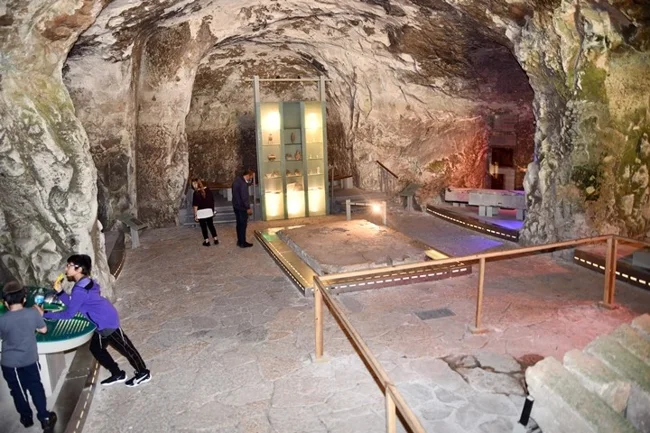
When it was discovered in the 1960s, workers thought it was hardened concrete. An attempt to move the slab with a bulldozer failed - it was too heavy to lift. So the artifact remained in place, becoming part of the museum exhibition. 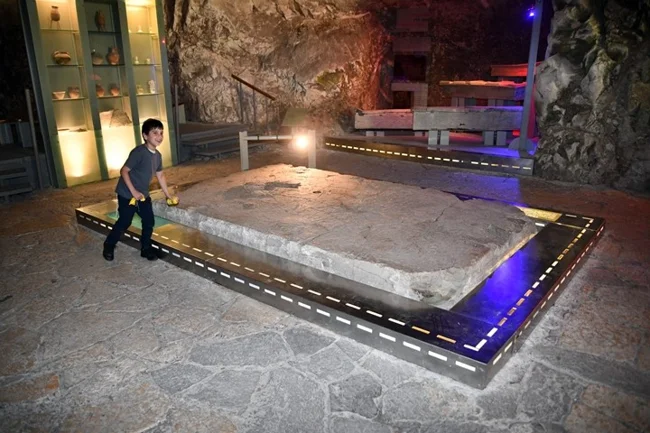
In 1963, an expedition from the Corning Museum of Glass and the University of Missouri explored the cave in search of traces of ancient glassmaking. Someone suggested: what if the strange slab is not stone at all?
A test confirmed that it was real glass, created in the Roman era. But why is it like that?
How glass was made 2000 years ago 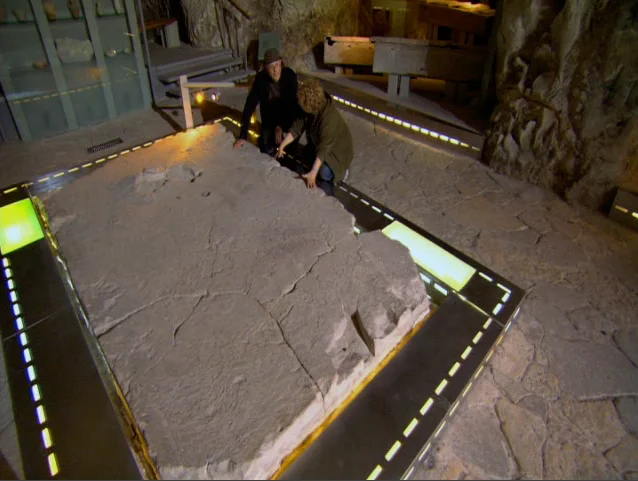
People learned to make glass 6000 years ago — before they mastered ironworking. True, the first samples were cloudy, with impurities. Transparent glass appeared only by the 15th century BC in Phoenicia, Syria and Egypt. 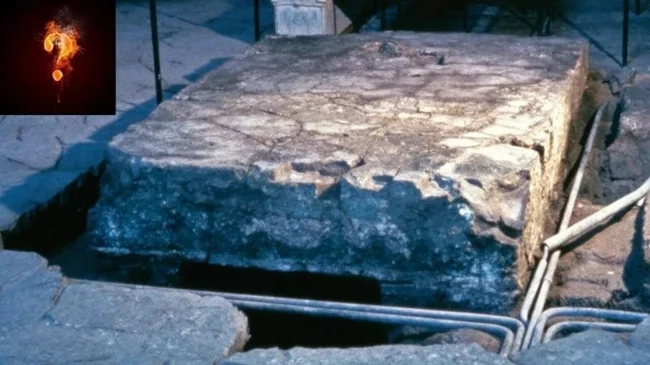
In the Roman era, this region became the center of glassmaking. The raw materials — sand and soda — were mixed in huge furnaces, melted at 1100°C, and then transported to workshops where vessels were blown from the blanks.
But something went wrong in Beit Shearim.
Fatal mistakes of ancient craftsmen 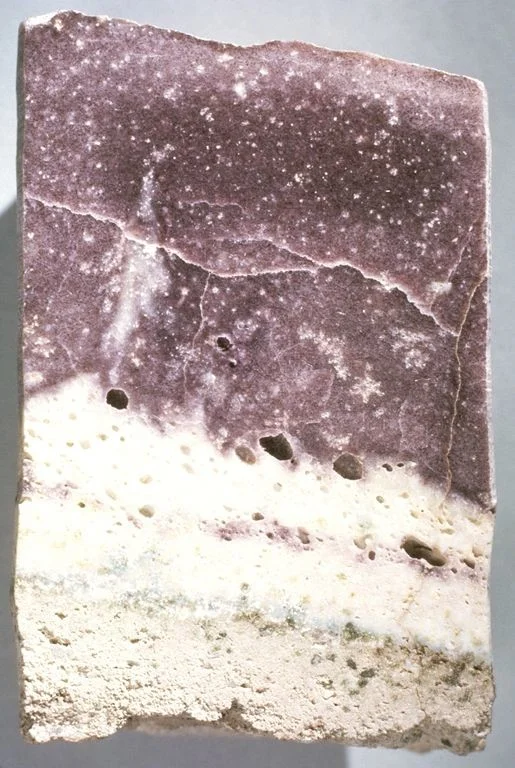
Polished core of the slab
Archaeologists have found out: the glass was melted in a stone container, heating from above (so as not to destroy the base). But: 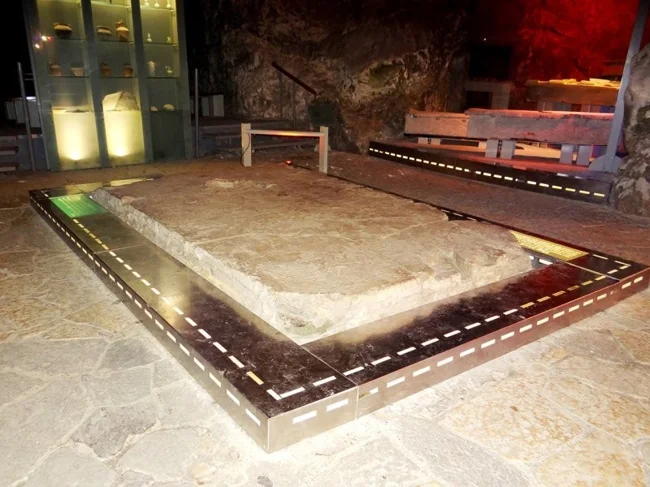
the heating did not reach the bottom - the lower layers remained damp, like coffee grounds.
lime chips got into the melt - the lime content doubled, and the glass crystallized, losing its transparency.
Instead of 50 thousand elegant vessels, a giant unsuccessful ingot was obtained.
What remains today 
Photomicrograph of crystals in the glass slab of Beit Shearim
The slab still lies in the cave, which has become a museum. Scientists consider it a unique piece of evidence of ancient technology - a reminder that even great masters made mistakes. But if not for the mistake, the slab would have been cut into thousands of vessels long ago, and it would not have survived to this day.
Who knows how many more of these "failures" that became masterpieces are hidden underground? 







